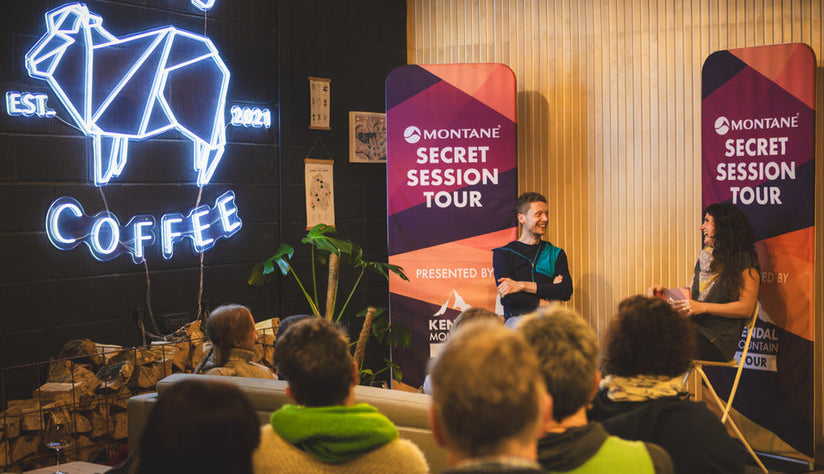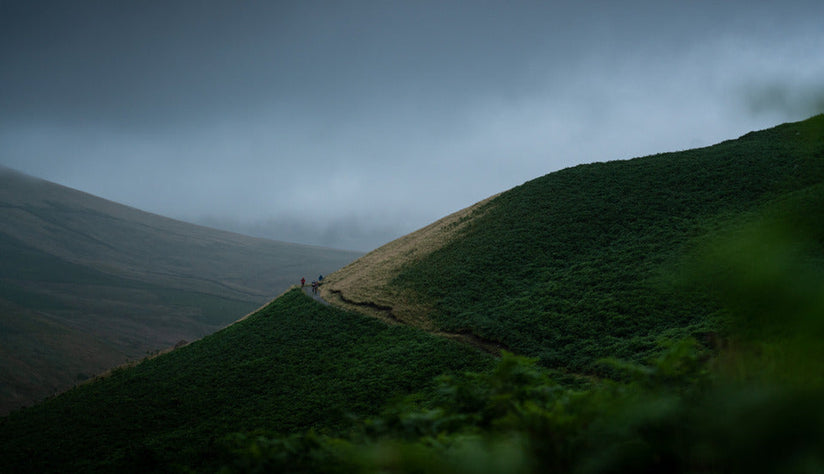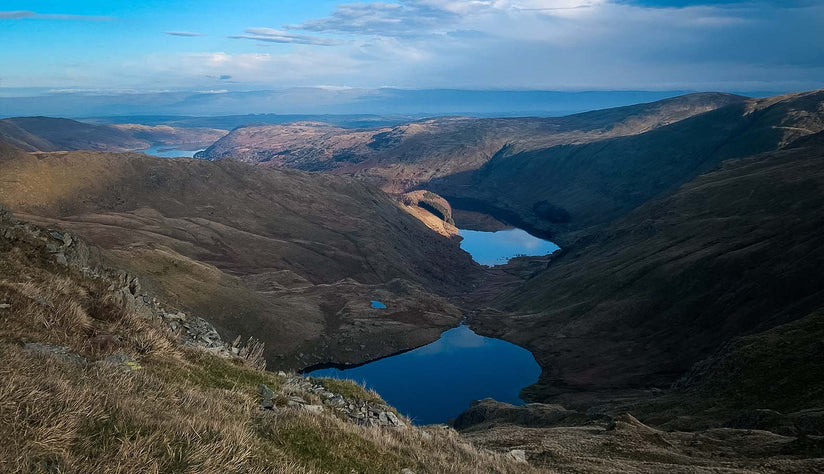Montane athlete, Jesse Dufton, is a blind rock climber, public speaker, and expert in clean power systems. Best known for his trad climbing and for the internationally acclaimed documentary Climbing Blind, Jesse is a lifelong climber. When a genetic eye condition rendered him blind, he refused to abandon his passion. In fact, since losing his sight, Jesse’s climbing has gone from strength to strength and taken him across the globe.
In 2022 Jesse travelled to Monterrey, Mexico, and the world-famous sport climbing venue of Potrero Chico, famed for its long multi-pitch sport climbs as well as single pitch test pieces. Potrero Chico is often compared to the Greek island of Kalymnos, each a popular winter sport climbing venue for North America and Europe respectively.

An Overview of Maccia
I had been invited to Mexico by Maccia, a local non-profit organisation seeking to change the perceptions about disability, and blindness specifically, which currently prevail in Mexico. Through Maccia, I had learned that unfortunately, disability is still stigmatised in Mexico by large portions of society and there is a pernicious lack of ambition and expectation surrounding disabled participation and achievement in society.
A stereotypical expectation here is that blind people will not work. They will subsist on meagre government support supplemented by begging and charity. Maccia and I had planned a series of events for the climbing community to challenge this view. This would be done by talking about my story, in a climbing and professional context, holding a series of participation workshops where people could experience various levels of sight-loss (with goggles to simulate common eye conditions) and then an example experience of a “Dinner in the Dark” where event participants eat a meal, blindfolded in pitch black darkness.
For me, these events were multi-threaded. Firstly, the obvious levity of the carnage that ensued during the meal as unwieldly utensils and decorum were abandoned in favor of dexterous fingers, ice cream and confusion spreading unchecked. Contrasting with the empathy as people experienced how losing sight affects daily life so dramatically, and then the realization of the importance of attitude.

But for me there are 2 things which stay in my mind. Firstly, the man in his 50’s who was losing his sight and had never climbed before arriving with his family, his wife learning how to guide and support him as he battled his way successfully to the top of the wall. As fate had closed some paths due to his blindness, Maccia and I had helped to open others and in so doing change how he perceived the way ahead of him, from powerlessness and inevitable decline to adjustment, persistence, and regained agency.
Secondly, in the closing of the last event where Maccia asked for people’s experiences, one participant captured the mood. He explained how he was the owner of a local business and that previously he had overlooked disabled candidates. He feared that they would not be able to fill the roles he had open. Having experienced first-hand a simulacrum of blindness, and seen how, with planning and attitude, obstacles can be overcome when adaptions are made, he vowed to re-evaluate his approach to disabled job applicants in future.
One employer will not, on their own, affect the lived experiences of Mexico’s disabled population overnight. But for widespread change to come, the seeds have to be planted and we as the outdoor community must recognize that the values we hold will percolate out into wider society so we should strive to adopt attitudes we are proud to live by. I hope we choose to firmly embed inclusion as a Tennent of our community. The work of Maccia and other great organizations assures me that, while we may not be perfect, we are on the right path.

Climbing El Salto, Justified
While I had been aware of Potrero Chico before travelling to Mexico, I had never heard of El Salto, another amazing sport climbing venue in the mountains above Monterey. The crags, most of which are still being developed, surround the village and its focal point, Hanuman, the climber’s café, from which you can take in the endless precession of off-road buggy’s that pass through, all with their stereos turned up to 11, before heading to the blissfully quiet crag.
Our local friends were keen to pick out routes for me, and after a rather stiff warm-up that got the initial pump going, they suggested I try the route of the crag. Justified, an imposing 5.11a which put it right at the top of my “on-sight” ability. “My mate has been trying this route for ages, and he still hasn’t got it. So, you’ve got to flash it” jested Mario, one of our local friends. Uncertain how I felt about being press-ganged into his schadenfreude I put the jokes to the back of my mind and pulled on.
The route starts up a free-standing pinnacle before stepping across a void to a slab which steepens into a vertical wall. As I entered the crux, moving left to avoid a completely smooth section of rock so frictionless it reminded me of glass or polished marble. I stretched left and found a horizontal crimp rail. Working my feet across then up. The imprecision of my foot placements punished me, as the rock's slickness meant my feet slid if I didn't find the optimal place for them. I hung from the crimp rail, searching for the next hold. Questing fingers flittering across the wall in search of a depression or edge that might unlock the puzzle. Eventually finding a tolerable Gaston I moved up. Using lots of body tension to free a foot and search for the next foothold on the slippery wall.

I was holding a strenuous position from the Gaston, on the clock, I can't hold this position for that long, need to find something to hold with my left hand. Search as I might I could find nothing that I could pull down or even sideways on. The only option I found wasn't that appealing. A thumb sprag, where I placed my left thumb underneath a small overhang barely sufficient for the final pad of my digit and then pressed upwards through my thumb using the tension of my body and those slippery footholds to keep me on the wall.
Pushing hard I took enough weight from my right hand and was able to release it. My left thumb and the taught muscles of my core were the only things keeping me on as I reached up with my right. And grasped the first thing I found, a slopey ledge. A wash of relief mixed with the exertion of the move. My heart pounding from the effort. I made another series of moves to reach a flat hold at the base of a rising rightward ramp. Initially I blasted up the ramp, before realizing that the hand holds soon evaporated and while standing on the ramp was an option, because the wall above bulged, if I worked my feet too high without hands I would be pushed out.
I was tired from the crux, my heart still racing and panting. I retreated to the flat hold and an imperfect and awkward rest. I ventured out then back, out then back, each time seeking hand holds to let me work my feet up the ramp. This repeated, again, and again, each time I found it harder to recover in the rest. Arms becoming pumped, but mostly my pulse taking longer to slow to a sustainable cadence.
Changing tack, I worked my hands out right where I had previously put my feet. Dangling my feet into the blank wall below. I found hand holds moving right then placing a high left heel hook I pressed up as far as I could, not far enough as Molly urged me higher over the radio. I readjusted, pressed again, another inch gained, still not enough, another adjustment and a mighty push with my pulse now hammering on my chest, I grabbed a slanting ledge and grasping the sloper with the last of my reserves pulled up, gasping for breath to jugs and the chains to complete the flash.

Lessons learned in Mexico
Mexicans eat tacos. Lots of tacos. I like tacos, but it is a bit weird having them for breakfast…
Potrero Chico is well known, but El Salto is just as good and will improve as more lines are bolted.
Low expectations of, and within, society’s marginalized groups are a huge barrier to equality and should be challenged.
The climbing community in Monterey is amazing, very welcoming and cool. Where else has lock-ins at the wall with next-level karaoke on a random Tuesday evening?
Discover more inspiring climbing stories
Want to hear more from Jesse? Good news - you can find out how he got on in both Joshua Tree National Park, USA, as well as the Lofoten Islands in Norway. Discover more stories and members of the #TeamMontane community on our dedicated page.
















